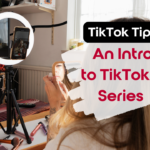Want to know a secret? Staying consistent is key.
As a content creator, we know it’s important to have a strong presence on social media. But with so many platforms and endless possibilities, it can be overwhelming to develop a content strategy that will truly engage and cater to each media’s audience. Don’t worry though, because we’ve got you covered!

Step 1: Define Your Goals
Before diving into content creation, ask yourself, what are my goals. Are you looking to expand brand awareness, drive traffic to your website, or increase leads? By clearly identifying your objectives, you can tailor your content strategy accordingly.

Step 2: Know Your Audience
Understanding your target audience is the first step to creating content that is relatable to them. Conduct market research, analyze demographics, and gather insights from your existing followers. This will help you craft content that speaks directly to their needs and topics of interests.

Step 3: Choose The Right Platforms
Not all social media platforms will make sense with your niche. Each platform has its own unique audience and features. Identify which platforms align best with your target audience and focus your efforts there. For example, if you’re targeting a younger demographic, platforms like TikTok or Instagram might be more suitable than LinkedIn.

Step 4: Create Engaging Content
Now that you know your goals, audience, and platforms, it’s time to create eye-catching content. Use a mix of formats such as images, reels, infographics, and written posts to keep your audience engaged. Experiment with different types of content to see what resonates best with your audience.

Step 5: Plan Out That Content Calendar
Consistency is key when it comes to social media. Remember our secret earlier? 😉 Developing a content calendar to ensure you have a steady stream of content going out regularly is crucial to never missing a post. Plus, this will help you stay organized and maintain the same brand voice across all socials. Use scheduling tools like Later to automate your posts and save time.

Step 6: Engage With Your Followers
Social media is all about building a community and relationships with your audience. Take time to respond to comments, messages, and mentions from your followers. Engage in comments, ask questions, and encourage conversations. This will only strengthen your relationship with your audience and increase your reach through your already loyal community members.

Step 7: Analyze and Optimize
Lastly, regularly analyze your social media performance to see what’s working and what’s not. Use analytics tools provided by each platform to track metrics such as engagement, reach, views, and see where those lead to conversions. Based on these insights, optimize your content strategy by mixing up your approach, experiment with new ideas, and learn from those numbers.. yes we know you don’t want to hear it, but numbers are apart of this step.


What Platforms To Best Market Yourself On and Your Brand: (Part 2)
Discover how to reach new audiences with your niche on Pinterest, YouTube, and LinkedIn!

What Platforms to Best Market Yourself on And Your Brand: (Part 1)
Let’s explore how you can make the most of your digital presence and reach your goals.

Decoding The Social Media Puzzle: Where To Post Content
You work hard on creating your content, and to get the best results from it, we want to make sure you are posting it to the social media platform that will have the most success. Find out more to receive all the knowledge!

Why You Should Follow Trends On Socials
Want to be a top-notch content creator? Then you gotta keep up with the latest trends on socials. From audio to types of content, here are our reasons why you should upgrade your content strategy with the latest popular trending content.

Getting Pearls Of Inspiration At The FITC Conference
Ever heard of FITC? Come along as we recap our experience at this 3-day tech conference.

The Metrics That Matter Tracking Your Analytics
Checking your insights and viewing how your content is performing is very important for creating a content strategy that will receive some buzz from your audience, but how do you know that the metrics you are looking at are the ones you want to be tracking? Well, we’re here to give you all the answers.

